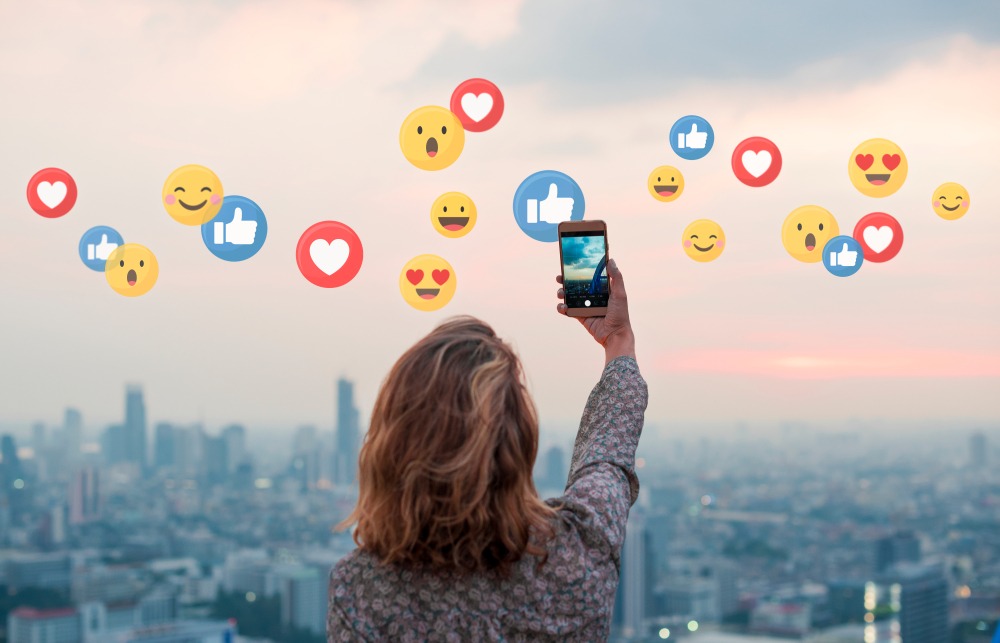
What’s an Influencer? Social Media Influencers
It’s 2021, so unless you’ve been in hiding for some time, you have undoubtedly heard the term influencer in the social media space. But what is an influencer?
Simply defined, an influencer is a blogger, YouTuber, Instagrammer, or TikTokker with a veritable slew of followers. Since they have a large number of people who pay close attention to what they do and what they say, influencers are responsible for informing, educating, inspiring and, oftentimes, selling.
Companies frequently hire these influencers to reach large audiences with the goal of selling more of the product or service that they are offering, in hopes that their message will be heard loud and clear This results in further exposure and, ideally, dollar signs.
What Makes An Influencer?

You may have a somewhat sizable following on, say, Instagram. What separates you from those who make their hobby and even their living as an influencer?
For starters, influencers post content that compel people to want to follow them and learn all about their lives. However, influencers can’t be everything to everybody, and companies know this. Therefore, influencers fall into different categories or genres based on what their platform and message is.
For example, there are many, many lifestyle influencers, and these individuals frequently post photos, videos and blogs about their life on a frequent basis, sometimes numerous times daily. Their followers are therefore exposed to content that illustrates what the influencer is achieving, buying, using, and often eating and drinking.
In essence, the idea is to portray a certain lifestyle that people want to know more about and, hopefully, buy into for themselves.
There are a number of areas where an influencer can make an impact on behalf of a brand. Specifically, the influencer:
- Shows exuberant and appealing personality
- Understands his target audience
- Is adept at engaging with their followers or subscribers
- Posts high-quality content with a consistent message that is logical, coherent and easy to access
What Can An Influencer Be Used For?

An influencer can be responsible for content in numerous areas.
Media
The influencer is responsible for the production of creative articles, posts, stories or videos, and then then distributes these via their social media platform.
However, an influencer does not receive any external media support such as an editorial board or a managing editor, and therefore they must work hard to build consistency and credibility with their content on their own merit.
Reviews
The influencer often reviews both products and services to their mass of followers, demonstrating the likability and appeal of such things. He or she can often take on the role of a commentator for various events, many times to attract a younger audience.
Activism and posting opinions regarding societal issues and events are also forms of this, and as a general rule it is the influencer who determines what point of view or stance they would like to have on an issue. This often incites and sparks debate and engagement on relevant and timely news events.
Experience
The influencer can also act as a guinea pig of sorts when traveling to various holiday destinations, illustrating the pros and cons of worldly locales that their followers might want to visit. In this way, the influencer shows their experience to their audience, which in turn perhaps will drive tourism to that destination.
Followers are more likely to form experiences of their own when they have seen someone else engage in those same things with positive results.
Youtube Influencer
The influencer is often sponsored by certain companies or organizations to post a video on YouTube promoting their product or message. These are basically quick, energetic and easy to access infomercials to inform, educate and promote a greater reach for these companies.
Not all influencers post sponsored videos, however, and often create their own content with products or services of their own choosing. This can work to an influencer’s advantage, as it’s free marketing for whatever they are promoting initially, and the companies may easily take notice of the influencer and formally hire them, monetizing their efforts.
What Is Influencer Marketing?

A highly advantageous aspect regarding collaborations between an influencer and a company is that it benefits both parties.
Let’s suppose that a company offers an influencer payment in addition to some of their products for an advertisement on the influencer’s platform. This is known as a sponsored post (it’s important to note that these must clearly state that they are indeed sponsored by a company or brand for legal reasons).
- The influencer provides great publicity about the product on their platform to his or her large audience of followers.
- These followers form favorable opinions about the product, which ideally motivates them to buy the product.
This way, the influencer has monetized their efforts in addition to receiving some pretty fantastic products for free, and the company has benefitted by gaining potential customers and positive publicity.
Many companies are increasingly becoming aware of the huge sales and exposure potential of social media marketing by using influencers.
Our lives have become closely centered on social media, and we are motivated and inspired by much of what we are constantly exposed to on these popular platforms. It’s therefore an enormous benefit to companies when they turn to social media influencers to promote their offerings.
Levels Of An Influencer?
However, the reach that an influencer has is obviously defined by his or her follower count. Some influencers have a few thousand followers, while others have an audience into the millions.
This, understandably, affects and determines how many people an influencer is able to reach and what influencers are best for which company. All of this is generally determined by what is known as engagement rate.
Engagement Rate
Engagement is based upon the principle that an influencer can have many followers, but those followers should ideally convert to action in the form of sales for the company that is sponsoring the influencer’s content.
Basically and ideally, a sizable percentage of an influencer’s audience should be visibly interacting with the content in the form of likes, comments and shares. This determines a high engagement rate, which is what every influencer strives for.
Micro-Influencers
Micro-influencers are the smallest of the bunch when it comes to social media content.
There is not an exact number of followers that would place an influencer in this category, but generally smaller markets see their micro-influencers in and around the 1,000 to 9,999 follower range. This can be as large as 50,000 in some regions, however.
It is interesting to note that oftentimes, the fewer the followers the influencer has, the higher their engagement rate is. The old adage of “quality over quantity” can explain this, as frequently an influencer’s smaller group of followers end up being more loyal and faithful than the masses of millions who flock to “more popular” influencers.
The smaller follower count genuinely tends to care a great deal about what influencers they choose to follow.
Let’s briefly examine Instagram as an example:
- Less than 1,000 followers = approx. 6-8% engagement rate
- Less than 5,000 followers = approx. 5% commitment rate
- Less than 10,000 followers = approx. 4% engagement rate
Also, it is notable that the price of hiring a micro-influencer is usually vastly lower than an influencer with a huge follower count, but the engagement rate is significantly higher with the smaller audiences. In other words, you get more bang for your buck in this regard.
Macro-Influencers
In this middle ground, we typically see followers in the range of 50,000 to 100,000. The great thing about this level of macro-influencers is that, all things considered equal, their influencer fees are not exorbitant, and yet they still have a desirable interaction rate with their followers.
Again, when we take a look at Instagram, a macro-influencer can generally expect an engagement rate of about 3%. When we look at Twitter, however, the engagement rate places somewhat lower at around 0.5%.
Mega-Influencers
Mega-influencers are obviously the biggest category with the largest follower count, and these are the influencers that are high on our radar and seem to pop out everywhere at us. Influencers in this group have a follower count of at least 100,000.
These influential powerhouses are very often used to launch large events and for marketing that quantitatively is meant to have an exceptional reach in a short amount of time.
However, A Few Disadvantages:
There is a significantly higher financial cost to companies when they choose to hire mega-influencers.
However, any platform or account with such a huge follower count has a huge number of those followers who are inactive, who are merely passive users, or are only following the influencer to hop on the bandwagon and join the crowd of other followers.
This greatly lowers the influencer’s engagement rate, which on Instagram is not uncommon at 1 to 2.5% for its mega-influencers. A gigantic follower count doesn’t always equal gigantic engagement and, in fact, it’s often just the opposite in a ratio perspective.
Which One Is Right For You?

There is an incredible number of influencers all over the world, whether micro, macro or mega. No matter their follower count, the best ones have their own style, with a clearly defined personality and message. Their wit, intelligence, humor, or amazing images shine through and attract a wide audience.
If you choose to utilize micro-influencers for your message or brand, you very well may face the challenge of their relative lack of experience on their particular platforms, but their smaller audience can work wonders for you in terms of higher engagement.
In contrast, a more expensive mega-influencer might carry a bit more weight and credibility with what you are trying to promote.
Whichever level of influencer you choose to utilize, there is an audience out there waiting to discover what you have to offer, and influencers can be the avenue to increased exposure and even profit.



Sorry, the comment form is closed at this time.